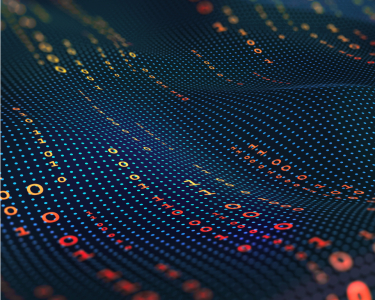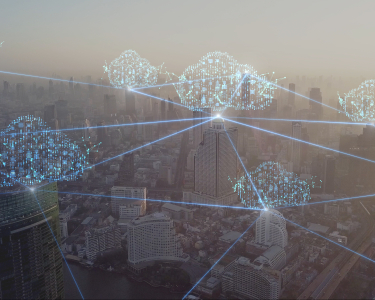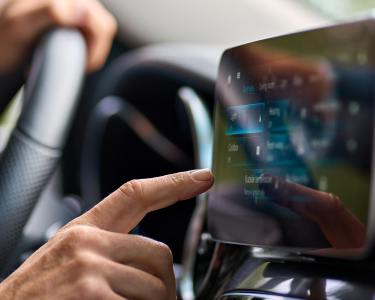Making Every Watt Count
The metrics that matter most to your green data center

The buildings sector is one of the largest energy consumers, contributing 36% to global energy consumption and 39% to worldwide carbon emissions. This makes it a pivotal player in addressing climate change. As global demand for data storage and usage grows, the number of data centers has increased significantly, highlighting the urgent need for energy efficiency. Currently, data centers account for approximately 1% of global electricity consumption, further emphasizing the importance of energy-efficient solutions. This has led to the emergence of sustainable data centers that prioritize efficiency, eco-friendliness, and cutting-edge technology.
Understanding and optimizing Key Performance Indicators (KPIs) is critical for businesses aiming to transform their data centers into high-performing, sustainable hubs.
Key KPIs Driving Data Center Efficiency
A green data center is an energy-efficient facility that reduces operational costs and minimizes carbon footprints. By leveraging renewable energy sources, optimizing water usage, and managing waste effectively, these centers positively impact the environment while boosting sustainable goals.
Read more about the basics of green data centers - Green Data Centers: Powering the Digital Transformation Responsibly | Tech Mahindra
Green data centers reduce energy consumption through management strategies such as Power Usage Effectiveness (PUE) and Carbon Usage Effectiveness (CUE). In addition to energy consumption, data centers have also faced significant water usage due to the cooling demands of high-capacity equipment such as chillers, cooling towers, Computer Room Air Handler (CRAH) units, and many more. This necessitates water consumption management through Water Usage Effectiveness (WUE).
Measuring the performance of a data center requires focusing on specific KPIs that include energy compass, cooling strategies, and sustainability goals. These metrics can provide quantitative data that helps data center owners and operators gain a better understanding of energy usage and identify opportunities to optimize the efficiency of existing data centers.
Let’s explore the most crucial metrics:
1. Power Usage Effectiveness (PUE)
PUE=(Total facility energy)/(IT Equipment Energy)
Total facility energy includes:
- Power delivery equipment, such as UPS systems, generators, power distribution units, batteries, switchgear, etc.
- Cooling system components, such as chillers, cooling towers, pumps, Computer Room Air Conditioning (CRAC) units, CRAHs, and Direct Expansion Air Handler (DX) units.
- Miscellaneous component loads, such as data center lighting.
IT equipment energy includes:
- Computing, storage, and networking equipment.
- Supplementary tools like KVM switches and workstations.
PUE is a unitless metric, with an ideal PUE value of 1.0, indicating that all energy consumed by the data center is dedicated to IT equipment. However, typical data centers average around 1.5-2.0, with green data centers aiming for values closer to 1.1-1.2.
2. Carbon Usage Effectiveness (CUE)
CUE=(CO2 emissions (kg))/(kWh of IT Equipment Energy)
Alternatively, CUE can be calculated by multiplying Carbon Emission Factors (CEF) with PUE. Unlike PUE, CUE has dimensions and an ideal value of 0.0 is appreciated. A CUE value of 0.0 indicates zero carbon emission. This metric specifically focuses on Scope 1 and Scope 2 emissions (direct on-site emissions and indirect emissions from purchased electricity).
3. Water Usage Effectiveness (WUE)
WUE=(Litres of Water Used)/(kWh of IT Equipment Energy)
Data centers relying on air conditioners may report a WUE value of 0, whereas those using evaporative cooling can have a WUE as high as 2.5, depending on evaporative cooling equipment, local climate, and choice of server cooling technology. Most data centers use hybrid methods, resulting in WUE values between 0 - 2.5.
4. Data Center Infrastructure Efficiency (DCiE)
DCiE is the inverse of PUE and represents the percentage of energy used by IT equipment relative to the total facility energy
DCiE(%)=(IT Equipment Energy)/(Total Facility Energy)*100
5. Rack Density
Rack density measures the power consumed per rack in the data center, often influencing cooling requirements and space utilization.
Rack Density=(kW consumed)/(Rack space (sq.ft.))
6. Server Utilization Rate
This metric evaluates how effectively servers are being used, often expressed as a percentage of available computing resources being utilized.
Utilization rate (%)=(Actual Usage)/(Total capacity)*100
7. Energy Reuse Effectiveness (ERE)
ERE=(Total facility reused energy)/(IT equipment energy )
How Technology Can Transform Data Center Metrics
The calculation of PUE, CUE, and WUE requires multiple factors. Technology adoption has emerged as a transformative approach to improve accuracy and efficiency. Technology provides real-time optimization, enabling data centers to manage current and future demands for cooling, space, and power, within a single, user-friendly platform.
Through advanced technologies and a deep understanding of these metrics, green data centers can effectively balance energy efficiency, carbon footprint, and water consumption, paving the way for a more sustainable data center ecosystem.
How Can Tech Mahindra Help You
At Tech Mahindra, we combine domain expertise with an innovative partner ecosystem to help data center owners achieve their vision for green data centers and continued sustainability.
Leveraging adaptive and advanced technology, Tech Mahindra addresses energy efficiency challenges by implementing AI and Digital Twin at the server level as well as the data center white space. Our deep decision-making insights focus on cutting down energy consumption, intensity, and cost by up to 50% while transforming the entire data center energy chain for maximum efficiency.
Our “Audit-Baseline-Recommend-Deploy and Manage” services approach helps data centers reduce energy consumption, intensity, and costs by up to 50%, transforming the energy chain for maximum efficiency.
With so much at stake, conserving resources and ensuring a livable planet for future generations are priorities we support. Reach us for advisory and engineering services to create a sustainable data center that is cost-efficient, meets regulatory requirements, and operates without disruptions.
References
- Grab Holdings (Shahabat.ai and Digital Inclusion): Overview of Grab's transformation into a super app and its impact on digital inclusion.
- The-Green-Grid-White-Paper-32-CUE-Usage-Guidelines.pdf
- *WP49-PUE A Comprehensive Examination of the Metric_v6.pdf
- What Is a Green Data Center? | IBM
- Green Data Centers: Powering the Digital Transformation Responsibly | Tech Mahindra
- https://www.ekkosense.com/ekkosoft-critical/capacity-power/

Dhananjaya is a Senior Consultant at Tech Mahindra, advising clients on smart buildings, cities, and net-zero solutions. His experience spans design, programming, and deploying various building automation systems, data-driven energy management, and design use cases around tenant experience and sustainability.








